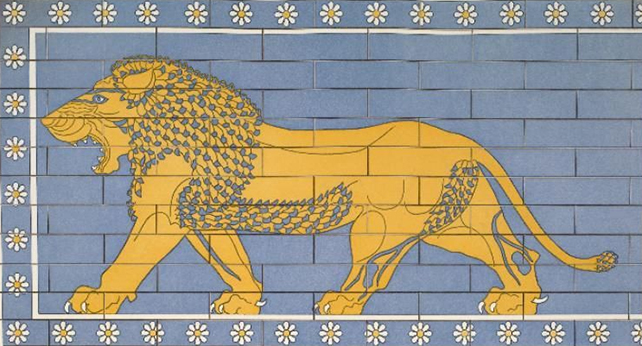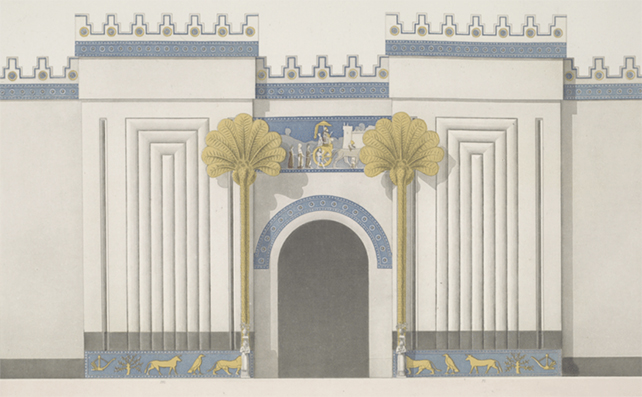ARTICLE AD
An ancient pictorial code that has intrigued experts for over a century may have been interpreted fully for the first time, giving us further insight into the mighty Assyrian empire that stretched across large parts of the Middle East from the 14th to 7th centuries BCE.
In particular, these symbols relate to King Sargon II, who ruled from 721–704 BCE. In their short form, they comprise a lion, a fig tree, and a plough. In their longer form, there are five symbols in sequence: a bird and a bull after the lion, then the tree and the plough.
These images appear in several places in temples in Dūr-Šarrukīn, which was briefly Assyria's capital. The buried ruins of the ancient city were excavated during the 19th and 20th centuries.
But the meaning of the images – whether they represent gods, supernatural forces, the king's authority, or an attempt at Egyptian hieroglyphs – has long been debated.
"This region of the world, which includes present-day Iraq and parts of Iran, Turkey and Syria, is often referred to as the 'cradle of civilisation'," says Assyriologist and historian Martin Worthington, from Trinity College Dublin in Ireland.
"It is where cities and empires were born, and its story is a huge part of human history."
 A reconstruction of how a lion would have looked on the temple walls. (New York Public Library)
A reconstruction of how a lion would have looked on the temple walls. (New York Public Library)Worthington has pulled together the clues to conclude that these pictures sound out Sargon's name, an idea first proposed (but not explored) in 1948.
He expands on this suggestion by showing the symbols could also reference star constellations – the intent being to pay respects to the sovereign king by writing out his name in the stars and associating him with the gods.
Importantly, the interpretation holds for both the long and the short forms of this graphical code. While previous theories have suggested the icons might refer to the king and to the night sky – not least because of the blue and yellow colors they were sometimes depicted in – this is the first research to systematically pull those ideas together.
 These figures would have been shown around the entrance to the temple. (New York Public Library)
These figures would have been shown around the entrance to the temple. (New York Public Library)Worthington goes into detail in explaining the language used: how, for example, the Assyrian word for "tree" sounds similar to "jaw", which is the name of a constellation the people of the time would've been familiar with. What's more, these constellations were linked to ancient gods, further respecting Sargon.
"The effect of the five symbols was to place Sargon's name in the heavens, for all eternity – a clever way to make the king's name immortal," says Worthington.
"And, of course, the idea of bombastic individuals writing their name on buildings is not unique to ancient Assyria."
Symbols of pacing lions would also have spelled out Sargon's name in ancient Assyrian – as well as having strong connections to royal figures – further confirming the link in the longer versions of this visual code.
Although they might have now receded into the ancient past, Mesopotamian civilizations were hugely significant in many aspects of human history, meaning an improved understanding of how they lived, thought, and ruled is valuable.
"The fact it works for both the five-symbol sequence and the three-symbol sequence, and that the symbols can also be understood as culturally appropriate constellations, strikes me as highly suggestive," says Worthington.
"The odds against it all being happenstance are – forgive the pun – astronomical."
The research has been published in the Bulletin of the American Society of Overseas Research.

 6 months ago
37
6 months ago
37 

